Vehicle reliability is a key factor in the ownership experience, impacting both maintenance costs and satisfaction. While some cars are engineered to run reliably with minimal intervention, others demand regular attention to keep them on the road.
This disparity stems from differences in design philosophy, manufacturing quality, component longevity, and intended market positioning. Reliable vehicles typically feature simpler, proven technology, overbuilt components, and conservative engineering approaches that prioritize longevity over cutting-edge features.
Conversely, high-maintenance vehicles often incorporate complex systems, specialized components, or performance-oriented designs that require more frequent service.
Understanding which vehicles fall into each category can significantly influence purchasing decisions, especially for buyers seeking either worry-free transportation or those willing to accept additional maintenance as a trade-off for other qualities.
This guide examines five notably reliable cars that can operate without constant upkeep and five models that consistently require attention, providing insights into what makes them fall on either end of the maintenance spectrum.
1. Toyota Corolla
The Toyota Corolla stands as perhaps the quintessential low-maintenance vehicle, earning its reputation through decades of engineering refinement focused on reliability above all else.
Toyota’s approach with the Corolla prioritizes proven technology over cutting-edge innovation, resulting in a vehicle that consistently delivers hundreds of thousands of miles with minimal intervention.
The heart of the Corolla’s reliability lies in its naturally aspirated four-cylinder engine, which avoids complexity by eschewing turbochargers, superchargers, or direct injection systems in many models’ components that frequently introduce additional maintenance requirements.
Toyota’s conservative engineering philosophy extends to the Corolla’s transmission options, where traditional automatic transmissions and manual gearboxes have historically dominated over more complex CVTs or dual-clutch systems.

These simpler transmission designs typically require little more than scheduled fluid changes to maintain optimal operation for the vehicle’s lifetime.
Electrical systems in the Corolla are similarly designed with redundancy and durability in mind, resulting in fewer electronic glitches that plague more technologically ambitious vehicles.
The Corolla’s reliability advantage also stems from its massive production scale, which allows Toyota to perfect manufacturing processes and component quality over millions of units.
This scale translates to extensive real-world testing that feeds back into continuous improvement cycles. Additionally, the ubiquity of the model ensures wide parts availability and service expertise, further reducing ownership challenges when maintenance is eventually required.
Consumer reports and reliability studies consistently rank the Corolla among the most dependable vehicles available, with many owners reporting nothing more than routine oil changes, brake service, and tire replacements well beyond the 150,000-mile mark.
This exceptional durability, combined with excellent fuel efficiency and reasonable purchase prices, cements the Corolla’s position as the benchmark for fuss-free automotive ownership.
2. Honda Civic
The Honda Civic has earned its place among the most maintenance-free vehicles through Honda’s unwavering commitment to engineering excellence and mechanical simplicity.
Like its Toyota competitor, the Civic benefits from an evolutionary rather than revolutionary development approach, where each generation builds upon proven components while making incremental improvements.
At the core of the Civic’s reliability is Honda’s legendary engine design, particularly their naturally aspirated VTEC engines that deliver excellent performance without complex forced induction systems that can introduce additional failure points.
Honda’s attention to detail extends to material selection throughout the vehicle, with high-grade metals used in critical engine components and transmission systems that resist wear even under demanding conditions.

The company’s manufacturing precision is evident in the tight tolerances maintained across all mechanical systems, resulting in reduced vibration, less component wear, and subsequently extended service intervals. This precision engineering allows many Civics to reach 200,000+ miles with only routine maintenance.
The Civic’s electrical architecture deserves special mention for its robustness. Unlike many competitors that experienced widespread electronic gremlins as vehicles became more computerized, Honda developed exceptionally durable control modules, sensors, and wiring harnesses that rarely require attention.
This reliability extends to ancillary systems like power windows, climate controls, and entertainment systems that continue functioning properly long after competing vehicles require repairs.
Fluid systems in the Civic, including cooling, braking, and transmission, are designed with generous capacity and effective filtration, allowing them to maintain optimal performance even when maintenance intervals are occasionally stretched.
The vehicle’s suspension components also demonstrate remarkable longevity, with many owners reporting original shocks and struts performing adequately even beyond 100,000 miles of service.
This comprehensive approach to durability across all vehicle systems has made the Civic a perennial favorite among consumers seeking hassle-free transportation.
3. Lexus ES
The Lexus ES exemplifies how luxury and low maintenance requirements can coexist in a single package. Built on Toyota’s proven engineering platform but raised with premium materials and craftsmanship, the ES inherits the parent company’s reliability DNA while delivering a significantly more refined ownership experience.
Lexus’s approach with the ES involves extensive component testing far beyond industry standards, with many systems designed to function flawlessly for at least 100,000 miles without intervention beyond scheduled maintenance.
The ES typically employs larger displacement, naturally aspirated V6 engines that operate under less stress than smaller turbocharged alternatives found in European luxury competitors.
These engines are deliberately under-stressed, often utilizing less than their maximum potential output to ensure longevity. Lexus engineers the ES powertrain with generous tolerances and premium materials, including timing chains rather than belts, eliminating a common maintenance requirement found in many other luxury vehicles.
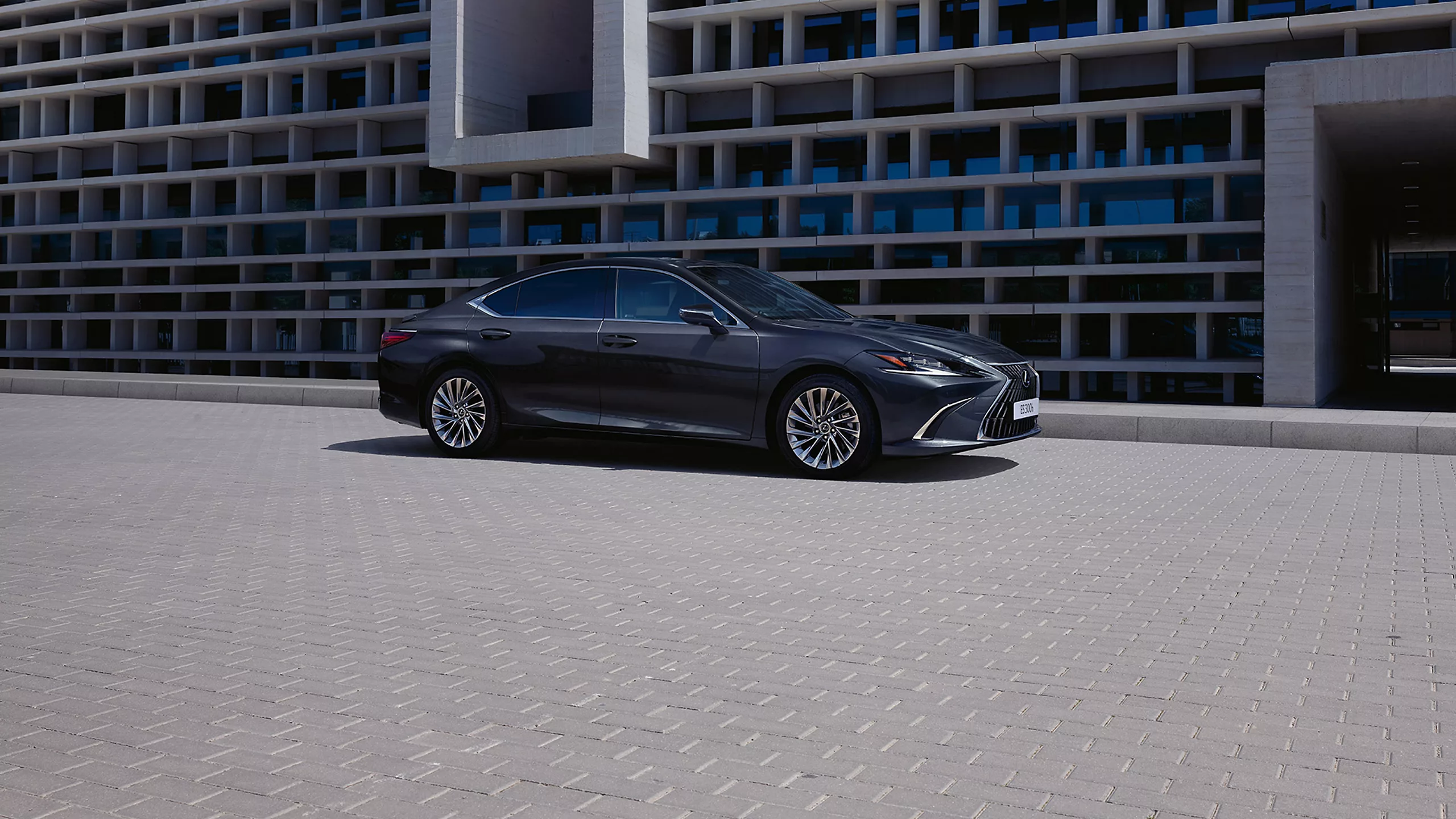
Electrical systems in the ES receive particular attention during development, with redundant circuits, weather-sealed connections, and military-grade wire insulation that prevents the electrical failures common in luxury vehicles as they age.
The climate control system is often a weak point in premium cars, featuring oversized components and simplified controls that maintain functionality well beyond the typical ownership period.
Lexus’s obsessive approach to quality control during manufacturing further enhances the ES’s reliability profile. Each vehicle undergoes extensive testing before leaving the factory, including road simulation, water intrusion testing, and electronic systems verification.
This meticulous quality assurance process catches potential issues before vehicles reach consumers, resulting in consistently lower repair frequencies across the ownership period.
The company’s dealer network also maintains higher service standards than many luxury brands, ensuring that when maintenance is required, it’s performed correctly the first time, preventing cascading issues that plague other premium vehicles.
4. Mazda MX-5 Miata
The Mazda MX-5 Miata defies the conventional wisdom that sports cars must be maintenance-intensive, delivering a uniquely reliable enthusiast experience through intelligent engineering simplicity.
Unlike exotic sports cars that require constant attention, the Miata embraces a “less is more” philosophy that results in exceptional durability without sacrificing driving enjoyment.
The vehicle’s lightweight design reduces stress on all mechanical components from engine and transmission to suspension and brakes, allowing them to operate within comfortable parameters even during spirited driving.
Mazda’s naturally aspirated four-cylinder engines in the Miata prioritize linear power delivery and reliability over maximum output, avoiding forced induction complications while still delivering adequate performance for the car’s lightweight chassis.
These engines feature timing chains rather than belts, eliminating a major scheduled maintenance item. The cooling system is generously sized relative to the engine’s heat output, preventing the overheating issues that plague many performance-oriented vehicles, particularly during track use or in warm climates.
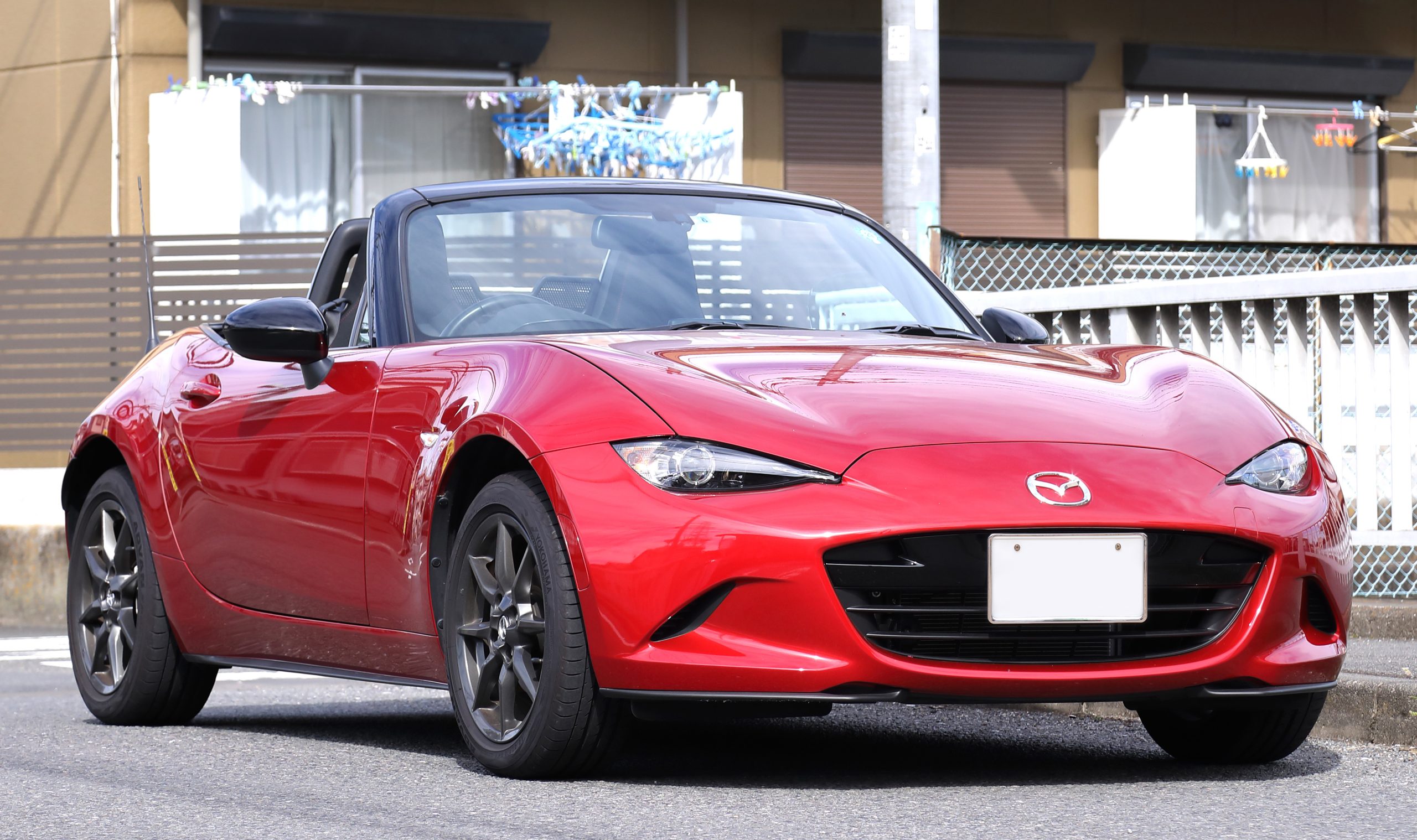
The Miata’s transmission, whether manual or automatic, is built with robust components that withstand enthusiastic shifting and higher RPM operation without developing the synchromesh problems or clutch failures common in other sports cars.
Similarly, the rear differential benefits from straightforward engineering without complex electronic controls or variable locking mechanisms that can introduce reliability concerns.
Perhaps most impressively, the Miata’s convertible top mechanism demonstrates remarkable longevity compared to more complex retractable hardtops or power-operated systems in luxury convertibles.
The manual operation eliminates motors, sensors, and hydraulics that typically fail over time, while the high-quality materials used in the top itself resist weathering and maintain proper sealing for years.
This pragmatic approach extends to the interior, where simple, durable controls replace the touch-sensitive panels and complex infotainment systems that frequently malfunction in other modern vehicles. The result is a sports car that owners can enjoy rather than constantly service—a rarity in the performance vehicle segment.
Also Read: 5 Entry-Level Cars That Feel Premium and 5 That Feel Cheap
5. Toyota 4Runner
The Toyota 4Runner stands as the benchmark for low-maintenance capability in the SUV segment, built on a foundation of mechanical simplicity and overbuilt components that consistently deliver extraordinary longevity.
Unlike modern crossovers that prioritize comfort and efficiency through complex systems, the 4Runner maintains a traditional body-on-frame construction and mechanical four-wheel-drive system that requires minimal intervention to remain functional. This approach creates an SUV that routinely surpasses 300,000 miles with basic maintenance, even when subjected to off-road use and harsh conditions.
The 4Runner’s naturally aspirated V6 engine avoids the additional maintenance demands of turbochargers while delivering adequate power for most driving scenarios.
Toyota deliberately tunes this engine conservatively, prioritizing flat torque curves and reliability over maximum horsepower figures. The cooling system is engineered with significant reserve capacity, preventing overheating even during towing or low-speed off-road driving where airflow is limited.
This thermal stability prevents head gasket failures and warped components that often plague other SUVs used in demanding conditions. The transmission and transfer case in the 4Runner feature straightforward designs with proven reliability records, avoiding complex electronic controls or cutting-edge gear arrangements that often introduce failure points.
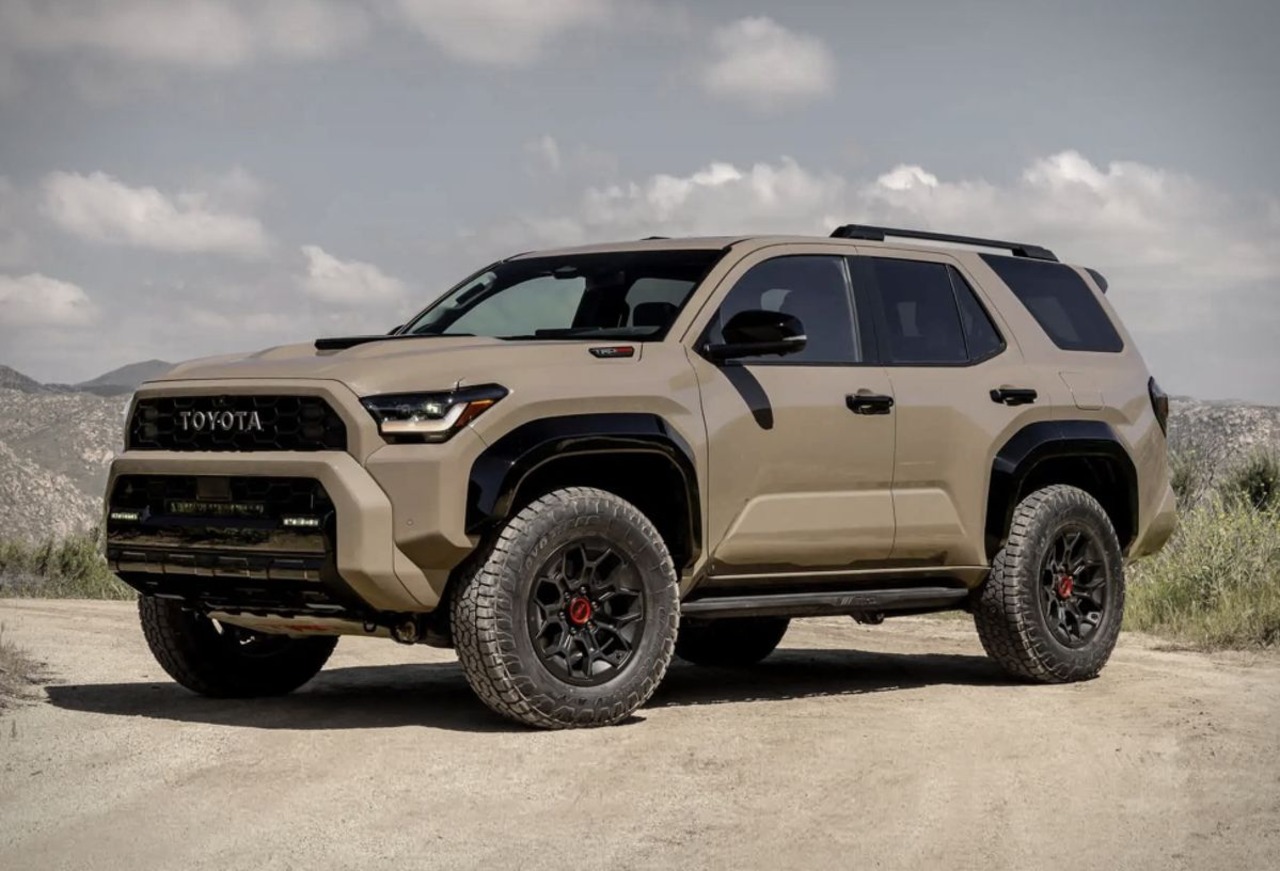
Toyota’s approach includes generous fluid capacities and effective cooling for these components, allowing them to maintain proper operation even when maintenance intervals are occasionally extended beyond recommendations. The vehicle’s frame and suspension components are similarly overbuilt, with heavy-duty bushings, ball joints, and control arms that resist wear even when subjected to off-road abuse.
Perhaps most significantly, Toyota continues to employ hydraulic power steering in many 4Runner models rather than electronic systems, eliminating a common failure point in modern vehicles. The braking system uses larger-than-necessary components that operate under less stress than in lighter-duty vehicles, extending service intervals for pads and rotors.
This comprehensive approach to durability across all vehicle systems makes the 4Runner exceptionally well-suited for owners seeking an SUV that will provide years of service with minimal downtime for repairs or maintenance.
Cars That Always Need Attention
1. Land Rover Range Rover
The Land Rover Range Rover represents the paradox of modern luxury SUVs, offering unmatched prestige and capability while simultaneously demanding constant attention to maintain proper operation. Its high-maintenance reputation stems from an ambitious engineering approach that prioritizes cutting-edge technology and extreme capability over long-term reliability.
The vehicle’s complex air suspension system exemplifies this philosophy, delivering remarkable ride quality and adjustable height but requiring regular inspection and often replacement of air springs, compressors, and electronic control units, typically beginning around 60,000 miles.
Range Rover’s powertrain options, particularly the supercharged V8 variants, operate under significant stress to deliver the performance expected in this segment.
These engines feature tight tolerances and sophisticated management systems that function flawlessly when perfectly maintained but quickly develop issues when maintenance schedules slip even slightly. Oil consumption often becomes problematic as these vehicles age, requiring owners to check levels between scheduled services.
The transmission systems similarly demand strict adherence to fluid change intervals, with many owners reporting significant shifting problems or complete failures when maintenance is delayed.
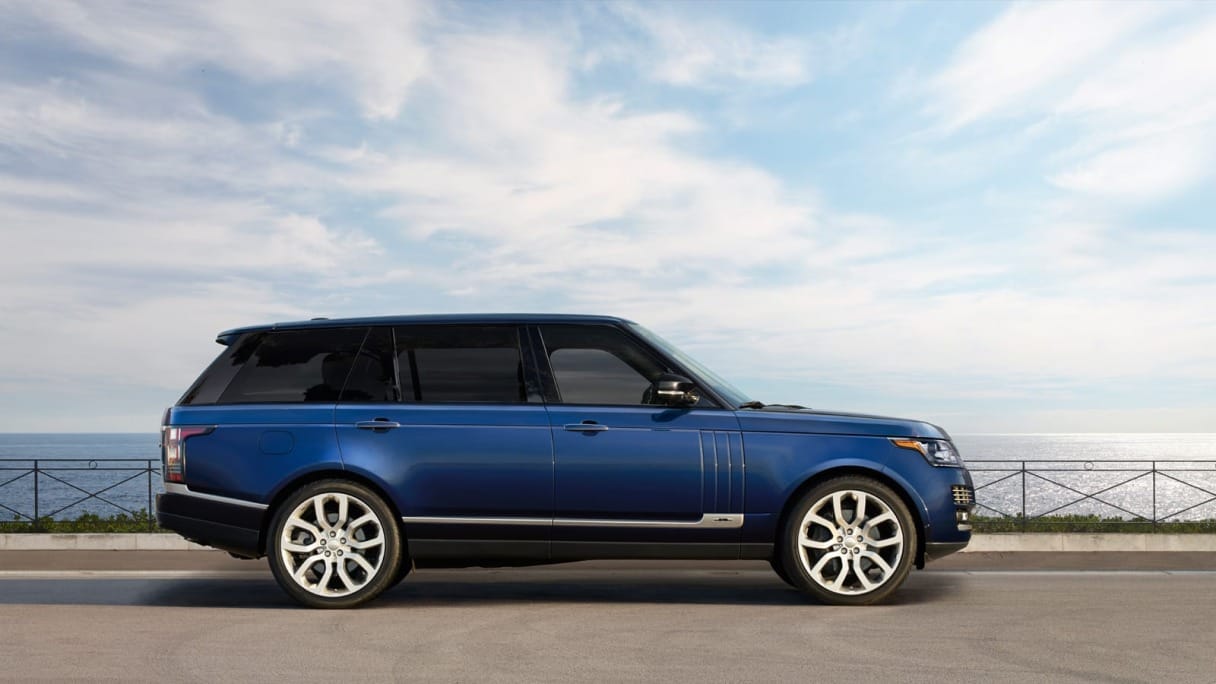
The vehicle’s electrical architecture represents perhaps its greatest maintenance challenge, with multiple interconnected control modules managing everything from climate control to off-road systems.
These electronics frequently develop inexplicable glitches that require specialized diagnostic equipment and factory-trained technicians to resolve. Even minor electrical issues can cascade into significant problems due to the integrated nature of these systems, where a failing door module might unexpectedly affect suspension operation or climate control.
Water intrusion presents another persistent concern for Range Rover owners, with sunroof drains, door seals, and body seams requiring regular inspection and maintenance to prevent moisture from damaging expensive electronic components hidden throughout the vehicle.
The luxury interior materials, while impressive when new, demand regular conditioning and protection to prevent premature wear, particularly on the leather surfaces that tend to dry and crack without proper care. This combination of sophisticated systems requiring specialized knowledge makes the Range Rover among the most maintenance-intensive vehicles available, despite its considerable purchase price.
2. BMW 7 Series
The BMW 7 Series exemplifies the maintenance challenges inherent in flagship German luxury sedans, where cutting-edge technology and performance engineering create a vehicle that demands constant attention to maintain proper function.
At the heart of the 7 Series’ maintenance intensity lies its complex turbocharged engines, whether inline-six, V8, or V12 configurations that operate under significant pressure to deliver both efficiency and performance.
These powerplants require premium synthetic oils changed at precise intervals, specialized spark plugs, and regular inspection of turbocharger components that can fail catastrophically when neglected.
The vehicle’s transmission system presents equally demanding maintenance requirements, with the sophisticated ZF 8-speed automatic requiring specialized fluid and filter changes that many owners overlook.
This oversight often leads to harsh shifting, delayed engagement, and eventually complete transmission failure, typically around 80,000-100,000 miles when maintenance has been neglected.
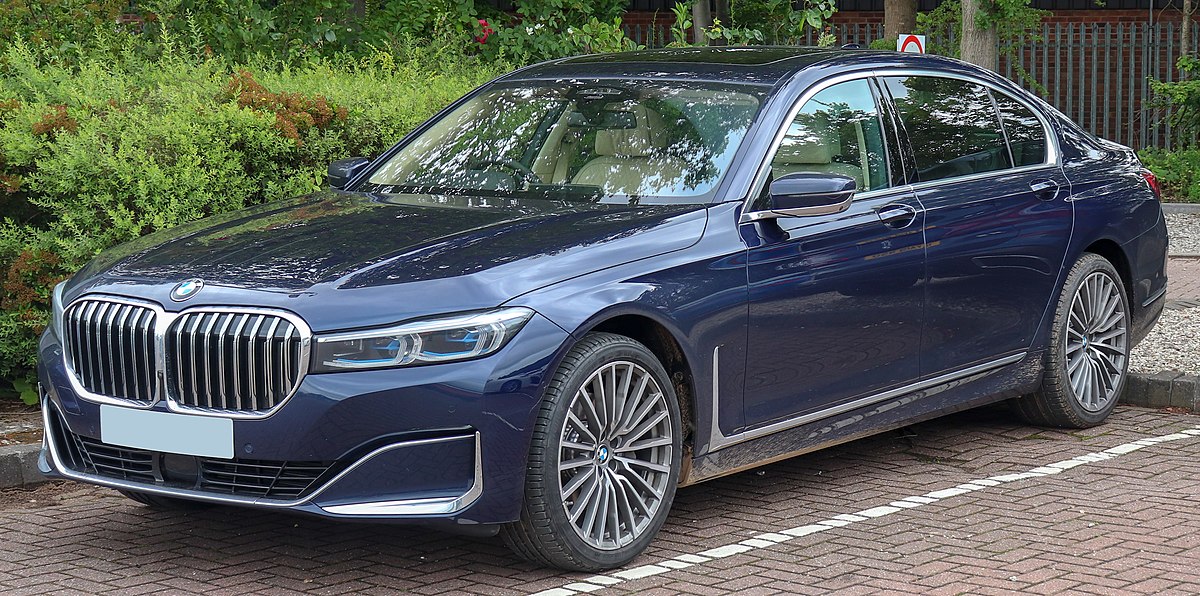
The 7 Series’ cooling system represents another maintenance hotspot, with plastic components and electronic water pumps that frequently fail without warning, potentially causing catastrophic engine damage if not addressed immediately.
Electrical complexity in the 7 Series reaches extraordinary levels, with over 100 microprocessors and control units managing everything from active suspension to ambient lighting.
This electrical sophistication creates a maintenance nightmare as the vehicle ages, with owners reporting mysterious battery drains, random warning lights, and inoperative comfort features that require specialized diagnostic equipment to resolve.
The vehicle’s air suspension and electronic damping systems similarly demand regular attention, with air springs and compressors typically requiring replacement at intervals far shorter than conventional suspension components.
Perhaps most frustratingly for owners, the 7 Series exhibits numerous small but expensive issues that collectively create a constant maintenance burden. Oil leaks from valve cover gaskets and oil pan seals become common after 60,000 miles, while rubber engine mounts deteriorate under the weight and vibration of the powerful engines.
The extensive use of plastic in the cooling system, intake manifold, and valve cover components results in brittle parts that crack with age and heat cycling. These issues, combined with the vehicle’s depreciation curve, often create situations where maintenance costs can exceed the vehicle’s market value within 7-10 years, making the 7 Series a prime example of luxury engineering that prioritizes innovation over long-term durability.
3. Audi A8
The Audi A8 represents the pinnacle of German engineering complexity, embodying a maintenance-intensive approach that prioritizes technological advancement and performance over long-term ownership simplicity.
As Audi’s flagship sedan, the A8 incorporates virtually every innovative system the company develops, creating a dense network of interdependent mechanical and electronic components that require constant monitoring and service.
The vehicle’s aluminum space frame construction, while providing weight savings and structural rigidity, introduces specialized repair requirements that few body shops can properly address, making even minor collision damage disproportionately expensive to repair.
The A8’s powertrain options, particularly the W12 and turbocharged V8 variants, operate with minimal engineering margins, requiring precise maintenance to prevent premature wear or catastrophic failure.
Carbon buildup on intake valves has plagued many direct-injection engines in the lineup, necessitating expensive cleaning procedures typically every 40,000-60,000 miles.
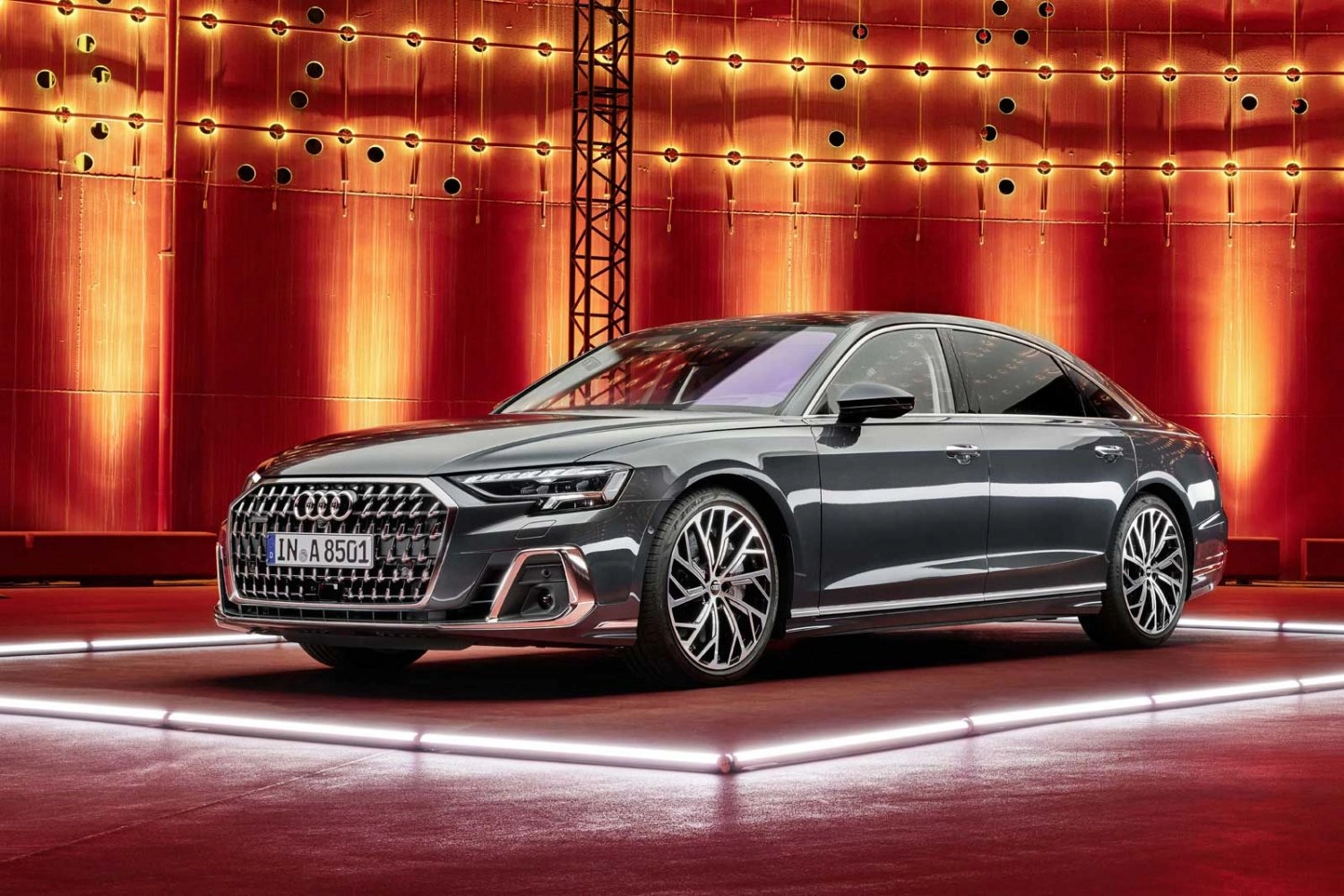
The timing chain systems in these engines have exhibited concerning failure rates, particularly in models where maintenance intervals were extended or where incorrect oil specifications were used an expensive repair that often costs several thousand dollars.
Audi’s quattro all-wheel-drive system in the A8 adds another layer of maintenance complexity, with transfer cases and front differentials requiring regular fluid services that are frequently overlooked by owners.
The vehicle’s air suspension components typically begin failing around 70,000 miles, with compressors, level sensors, and air springs all representing significant repair expenses when they inevitably deteriorate.
This sophisticated suspension system, while delivering exceptional ride quality when functioning properly, creates a constant maintenance concern as the vehicle ages.
The A8’s electrical architecture represents perhaps its greatest maintenance challenge, with an extensive CAN bus network connecting dozens of control modules that manage everything from headlight leveling to massage seats.
Electrical issues frequently manifest in seemingly unrelated systems due to this integrated approach, making diagnosis particularly challenging without factory-level diagnostic equipment. Water intrusion through sunroof drains or body seams can damage these expensive electronic components, creating cascading failures that often perplex even experienced technicians.
This combination of mechanical sophistication and electronic complexity makes the A8 among the most demanding vehicles to maintain properly, requiring owners to establish a relationship with specialized service facilities and budget accordingly for its ongoing care.
4. Maserati Ghibli
The Maserati Ghibli embodies the maintenance-intensive nature of exotic Italian sports sedans, where emotional design and visceral performance take precedence over reliability and service intervals.
Despite sharing some components with other Stellantis vehicles, the Ghibli maintains distinctly high-maintenance characteristics stemming from its performance-oriented engineering and manufacturing approach.
The Ferrari-designed twin-turbocharged V6 engine at its heart demands meticulous maintenance, requiring specialized synthetic oils, filtration components, and inspection procedures that significantly exceed those of mainstream luxury vehicles.
These engines develop various oil leaks as they age, particularly around the timing cover and oil pan areas, requiring regular inspection and often expensive repairs.
The Ghibli’s ZF-sourced automatic transmission, while theoretically robust, experiences accelerated wear patterns when subjected to the engine’s considerable torque output and Italian driving character.
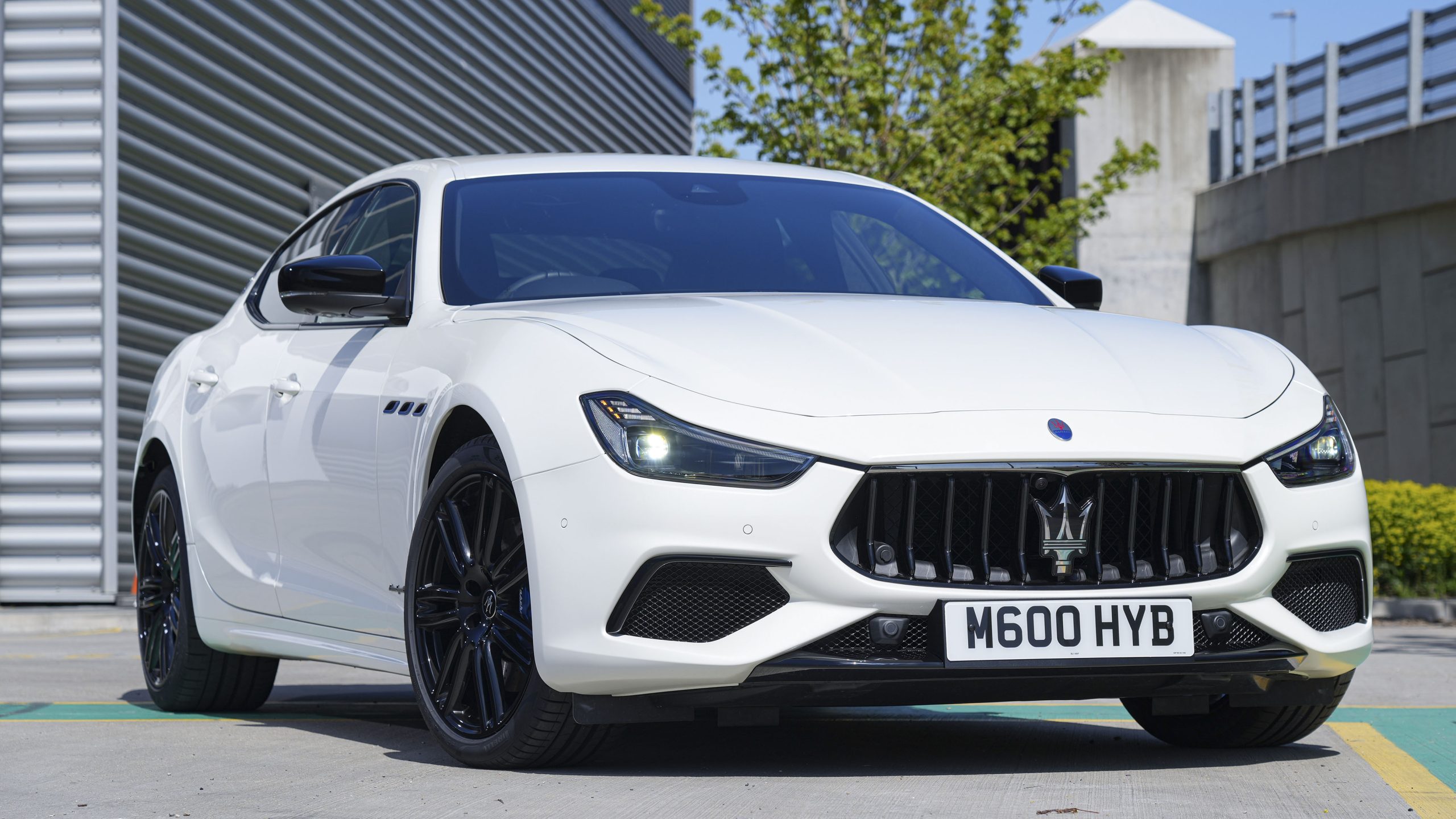
Transmission fluid services become necessary at intervals far shorter than Maserati’s official recommendations suggest, with many specialists advising changes every 30,000 miles rather than the factory’s 60,000-mile interval.
The cooling system represents another maintenance hotspot, with multiple radiators, intercoolers, and complex routing that create numerous potential failure points, particularly problematic given the heat generated by the turbocharged powerplant.
Electrical systems in the Ghibli frequently demand attention, with numerous owners reporting battery drain issues, sporadic warning lights, and infotainment glitches that require specialized diagnostic equipment to resolve.
The vehicle’s Italian electrical architecture follows different design principles than German or Japanese counterparts, often making troubleshooting particularly challenging for technicians without specific Maserati experience.
Even basic electrical accessories like power windows, seat controls, and climate systems exhibit reliability concerns that create a constant stream of small but irritating issues requiring dealer attention.
Beyond these major systems, the Ghibli suffers from numerous small quality control inconsistencies that collectively create significant maintenance requirements. Interior trim pieces develop rattles and detach from mounting points, leather surfaces wear prematurely without regular conditioning, and weather seals deteriorate faster than in comparably priced luxury vehicles.
The carbon ceramic brake options, while providing exceptional stopping performance, wear at unpredictable rates depending on driving style and require extremely expensive replacement components.
This combination of exotic engineering, inconsistent build quality, and specialized service requirements makes the Ghibli among the most maintenance-intensive vehicles in the luxury sports sedan segment, demanding owners maintain a close relationship with specialized service facilities to keep the vehicle performing properly.
5. Alfa Romeo Giulia Quadrifoglio
The Alfa Romeo Giulia Quadrifoglio delivers unmatched driving excitement at the cost of extraordinary maintenance demands that keep owners in close contact with service departments.
This high-performance sedan embodies the traditional Italian approach to automotive engineering, prioritizing emotional connection and track capability over day-to-day reliability.
At the heart of its maintenance requirements lies the Ferrari-derived twin-turbocharged V6 engine, which operates with minimal engineering tolerances and requires frequent specialist attention to maintain proper function. Oil consumption becomes a common concern as these engines age, necessitating regular level checks between service intervals to prevent damage.
The Giulia Quadrifoglio’s sophisticated carbon ceramic brake system, while delivering exceptional stopping power, requires careful management to prevent expensive premature wear.
These specialized brakes demand proper warming before aggressive use and can develop uneven wear patterns that create vibration and reduced performance issues that can only be resolved by replacing extraordinarily expensive components.
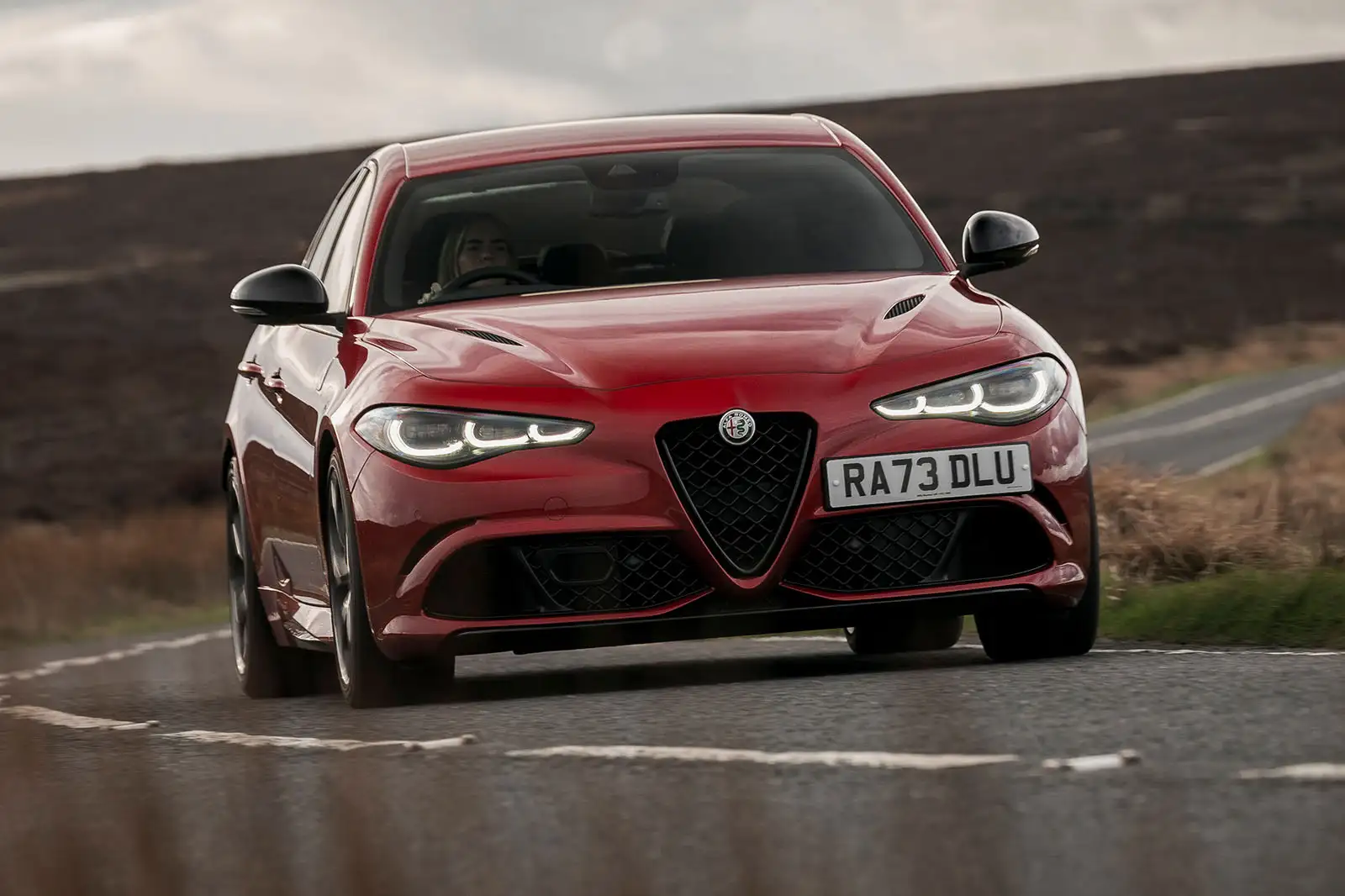
The vehicle’s adaptive suspension system similarly requires regular inspection and often component replacement far earlier than conventional systems, with electronic dampers and control arms developing play or fluid leaks typically around 40,000-50,000 miles.
Electrical gremlins plague the Giulia Quadrifoglio at rates significantly higher than mainstream vehicles, with owners reporting random warning lights, infotainment system crashes, and climate control irregularities that often defy conventional diagnosis.
These issues frequently require multiple dealer visits to resolve, with software updates providing only temporary solutions in many cases. The integration of advanced driver assistance systems adds another layer of complexity, with cameras and radar sensors requiring precise calibration that can be easily disrupted by minor impacts or even aggressive driving over rough surfaces.
Perhaps most challenging for owners, the Giulia Quadrifoglio’s maintenance requirements extend beyond predictable scheduled services to include numerous unexpected issues that develop between intervals. Cooling system components develop leaks, turbocharger waste gates require adjustment, and exhaust system hangers deteriorate from heat exposure.
These issues, combined with limited dealer networks in many regions, create significant ownership challenges, with some repairs requiring vehicle transportation to distant specialized facilities.
This comprehensive maintenance intensity reflects Alfa Romeo’s focus on delivering a pure driving experience rather than trouble-free ownership, making the Giulia Quadrifoglio a vehicle that demands commitment from its owners in exchange for its exceptional performance characteristics.
Also Read: 5 Family Cars That Last and 5 That Constantly Need Work

